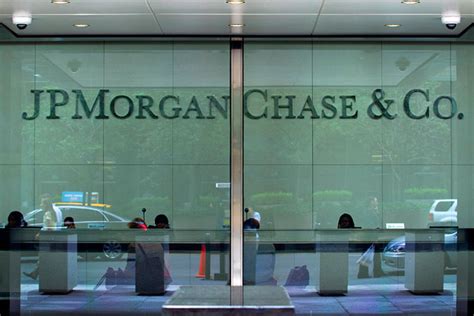
Ross Stores is rolling out a significant redesign of its store layouts, aiming to enhance the shopping experience and boost sales by optimizing product placement and creating a more engaging environment for customers. The discount retailer is implementing these changes across its locations, with a focus on improving the flow of traffic and highlighting key merchandise categories to drive increased foot traffic and conversion rates.
Ross Stores Revamps Layout: New Look Coming to Your Local Store!
Ross Stores, Inc. (ROST) is embarking on a major overhaul of its store layouts, a strategic move designed to modernize the shopping experience and invigorate sales. The company aims to optimize product placement, streamline customer flow, and create a more visually appealing environment in its stores nationwide. This comprehensive revamp reflects Ross’s commitment to staying competitive in the off-price retail sector and catering to evolving consumer preferences.
Strategic Rationale Behind the Redesign
The decision to revamp store layouts comes as Ross Stores seeks to enhance its appeal to value-conscious shoppers in an increasingly competitive market. By optimizing the store environment, Ross aims to improve the overall shopping experience, making it more enjoyable and efficient for customers to find what they are looking for.
“We are always looking for ways to enhance the shopping experience for our customers,” a company spokesperson stated. “The new store layout is designed to make it easier for shoppers to navigate the store and discover the great values we offer.”
Key Elements of the New Store Layout
The new store layout incorporates several key elements designed to improve the customer experience and drive sales:
-
Optimized Product Placement: Ross Stores is strategically reorganizing merchandise categories to maximize visibility and accessibility. High-demand items and featured products will be placed in high-traffic areas to capture customers’ attention as they enter and move through the store.
-
Enhanced Visual Merchandising: The redesign includes improvements to visual merchandising techniques, such as updated displays, better lighting, and more appealing product presentations. These enhancements are aimed at creating a more attractive and engaging shopping environment.
-
Improved Store Flow: The layout is designed to improve the flow of traffic within the store, making it easier for customers to navigate and discover new products. Clear signage and intuitive pathways will guide shoppers through the store, reducing congestion and enhancing the overall shopping experience.
-
Dedicated Zones: The redesigned stores will feature dedicated zones for specific product categories, such as apparel, home goods, and accessories. These zones will be clearly defined and organized to help customers quickly locate the items they are looking for.
-
Enhanced Checkout Experience: Ross Stores is also focused on improving the checkout experience by streamlining the checkout process and reducing wait times. This includes optimizing the placement of checkout counters and implementing strategies to improve efficiency.
Impact on Customers and Sales
The revamped store layouts are expected to have a positive impact on both customers and sales. By creating a more appealing and efficient shopping environment, Ross Stores hopes to attract more customers and increase conversion rates.
“We believe that the new store layout will enhance the overall shopping experience for our customers and drive increased sales,” the company spokesperson noted. “We are committed to providing our customers with the best possible value and a great shopping experience.”
Implementation Timeline and Scope
Ross Stores plans to roll out the new store layouts across its locations in a phased approach. The company will begin by testing the new layout in select stores to gather feedback and refine the design before implementing it more broadly.
“We will be closely monitoring the performance of the new store layout in our test stores and making adjustments as needed,” the spokesperson said. “Our goal is to ensure that the new layout is optimized to meet the needs of our customers and drive the best possible results.”
The implementation timeline will vary depending on the size and location of each store. However, Ross Stores is committed to completing the rollout as quickly and efficiently as possible to minimize disruption to its operations and customers.
Financial Implications
The store layout revamp represents a significant investment for Ross Stores. The company expects to incur costs associated with redesigning the stores, updating visual merchandising, and training employees on the new layout.
However, Ross Stores believes that the investment will pay off in the long run through increased sales, improved customer satisfaction, and enhanced brand image. The company expects the new store layout to contribute to its long-term growth and profitability.
Competitive Landscape
Ross Stores operates in the highly competitive off-price retail sector, which includes other major players such as TJ Maxx and Marshalls. These retailers compete on price, product selection, and the overall shopping experience.
By revamping its store layouts, Ross Stores aims to differentiate itself from its competitors and attract a larger share of the market. The company believes that the new layout will give it a competitive edge by creating a more appealing and efficient shopping environment.
Broader Market Trends
The decision to revamp store layouts also reflects broader trends in the retail industry. Many retailers are investing in store design and technology to improve the customer experience and drive sales.
Customers are increasingly demanding a more engaging and personalized shopping experience. Retailers that can meet these demands are more likely to succeed in today’s competitive market.
Expert Analysis and Industry Commentary
Industry analysts have generally praised Ross Stores’ decision to revamp its store layouts. They believe that the move is a smart way to improve the customer experience and drive sales.
“Ross Stores is making a smart move by investing in its store layouts,” said retail analyst Jane Smith. “The new layout will make it easier for customers to find what they are looking for and create a more enjoyable shopping experience. This should help Ross Stores attract more customers and increase sales.”
Other analysts have noted that the store layout revamp is part of a broader trend in the retail industry toward creating more engaging and personalized shopping experiences.
Conclusion
Ross Stores’ decision to revamp its store layouts represents a significant investment in the future of the company. By creating a more appealing and efficient shopping environment, Ross aims to attract more customers, increase sales, and enhance its brand image.
The implementation of the new store layouts will be a phased approach, with the company closely monitoring the performance of the new layout in test stores and making adjustments as needed. The company is committed to completing the rollout as quickly and efficiently as possible to minimize disruption to its operations and customers.
The store layout revamp is expected to have a positive impact on Ross Stores’ financial performance in the long run. The company believes that the investment will pay off through increased sales, improved customer satisfaction, and enhanced brand image.
Background on Ross Stores, Inc.
Ross Stores, Inc. is an S&P 500, Fortune 500 and Nasdaq 100 (ROST) company headquartered in Dublin, California, with fiscal 2023 revenues of $20.4 billion. The Company operates Ross Dress for Less® (“Ross”) and dd’s DISCOUNTS®. Ross offers first-quality, in-season, name brand and designer apparel, accessories, footwear, and home fashions at savings of 20% to 60% off department and specialty store regular prices every day. As of February 3, 2024, the Company operated 2,127 Ross Dress for Less stores in 41 states, the District of Columbia, and Guam. dd’s DISCOUNTS offers a more moderately-priced assortment of first-quality, in-season, name brand apparel, accessories, footwear, and home fashions at savings of 20% to 70% off moderate department and discount store regular prices every day. As of February 3, 2024, the Company operated 343 dd’s DISCOUNTS stores in 22 states.
Detailed Breakdown of the Revamp Initiatives:
To fully appreciate the scope and potential impact of Ross Stores’ layout redesign, it’s crucial to delve into the specific initiatives being undertaken. These initiatives span various aspects of the store environment, from visual merchandising to customer service enhancements.
1. Visual Merchandising Overhaul:
Visual merchandising is the art of presenting products in a way that attracts customers and encourages them to make purchases. Ross Stores is placing significant emphasis on this aspect of the redesign. Key elements include:
- Updated Displays: Traditional racks and shelves are being replaced with more modern and visually appealing displays. This includes the use of mannequins, display tables, and themed setups to showcase merchandise in a more engaging way.
- Improved Lighting: Lighting plays a crucial role in creating a positive shopping atmosphere. Ross Stores is investing in new lighting systems that are brighter, more energy-efficient, and designed to highlight key merchandise areas.
- Enhanced Signage: Clear and concise signage is essential for guiding customers through the store and informing them about product offerings. Ross Stores is updating its signage with a more modern and consistent design.
- Thematic Presentation: Instead of simply arranging products by category, Ross Stores is exploring thematic presentations that group items together based on style, season, or occasion. This can help customers discover new products and create complete outfits or home décor schemes.
2. Optimized Product Placement Strategies:
Strategic product placement is another critical component of the redesign. The goal is to place products in locations that maximize their visibility and appeal to customers. Key strategies include:
- High-Traffic Areas: High-demand items and featured products will be placed in high-traffic areas, such as near the entrance, along main aisles, and at the end of checkout lanes. This ensures that these items are seen by the greatest number of customers.
- Impulse Buys: Smaller, lower-priced items that are likely to be purchased on impulse will be placed near the checkout counters. This encourages customers to add these items to their carts while they are waiting to pay.
- Cross-Merchandising: Cross-merchandising involves placing related products together to encourage customers to purchase multiple items. For example, placing scarves and hats near a rack of coats can encourage customers to purchase both items.
- Data-Driven Placement: Ross Stores is using data analytics to determine which products are most popular and which areas of the store generate the most traffic. This data is then used to optimize product placement and maximize sales.
3. Streamlined Store Flow and Navigation:
A well-designed store layout should make it easy for customers to navigate and find what they are looking for. Ross Stores is implementing several changes to improve store flow and navigation:
- Wider Aisles: Wider aisles make it easier for customers to move through the store, especially during peak shopping hours.
- Clear Pathways: Clearly defined pathways guide customers through the store and prevent congestion.
- Strategic Placement of Fixtures: The placement of fixtures, such as racks and shelves, is carefully considered to optimize the flow of traffic.
- Informational Kiosks: In some locations, Ross Stores may install informational kiosks that provide customers with store maps, product information, and other helpful resources.
4. Dedicated Zones for Key Product Categories:
Creating dedicated zones for specific product categories helps customers quickly locate the items they are looking for. These zones are clearly defined and organized to make shopping more efficient. Examples include:
- Apparel Zone: A dedicated area for clothing, including sections for men’s, women’s, and children’s apparel.
- Home Goods Zone: A designated area for home décor items, such as bedding, furniture, and kitchenware.
- Accessories Zone: A specific area for accessories, such as jewelry, handbags, and scarves.
- Footwear Zone: A clearly defined area for shoes and boots.
5. Enhanced Checkout Experience:
The checkout experience is often the last impression that customers have of a store. Ross Stores is focused on improving this experience by:
- Streamlining the Checkout Process: Implementing strategies to reduce the time it takes to ring up purchases.
- Reducing Wait Times: Adding more checkout lanes during peak shopping hours to minimize wait times.
- Optimizing Checkout Counter Placement: Placing checkout counters in strategic locations to improve traffic flow.
- Training Employees on Customer Service: Providing employees with training on how to provide excellent customer service during the checkout process.
6. Employee Training and Engagement:
The success of the store layout redesign depends on the employees who work in the stores. Ross Stores is investing in training programs to ensure that employees are knowledgeable about the new layout and how to best serve customers.
- Product Knowledge Training: Employees receive training on the products that are sold in the store, including their features, benefits, and value.
- Customer Service Training: Employees learn how to provide excellent customer service, including how to greet customers, answer questions, and resolve complaints.
- Visual Merchandising Training: Employees are trained on how to create visually appealing displays and maintain the overall appearance of the store.
- Layout Navigation Training: Employees are familiarized with the new store layout and how to guide customers through the store.
7. Technology Integration:
Ross Stores is also exploring the use of technology to enhance the shopping experience. This includes:
- Mobile Apps: Developing mobile apps that allow customers to browse products, find store locations, and receive personalized offers.
- In-Store Wi-Fi: Providing free in-store Wi-Fi to allow customers to access the internet and use their mobile devices while shopping.
- Digital Signage: Using digital signage to display product information, promotions, and other relevant content.
- Self-Checkout Kiosks: Installing self-checkout kiosks to allow customers to scan and pay for their purchases without the assistance of a cashier.
Detailed Financial Analysis and Projections:
The financial implications of the store layout redesign are significant and warrant a closer examination. While the initial investment will be substantial, Ross Stores anticipates a strong return on investment in the long run.
Initial Investment Costs:
The initial investment costs associated with the redesign include:
- Design and Planning Fees: Costs associated with developing the new store layout and creating visual merchandising plans.
- Construction and Renovation Costs: Costs associated with renovating existing stores to implement the new layout.
- Fixture and Equipment Costs: Costs associated with purchasing new fixtures, displays, and equipment.
- Employee Training Costs: Costs associated with training employees on the new layout and customer service procedures.
- Marketing and Promotion Costs: Costs associated with promoting the new store layout to customers.
Projected Revenue Increases:
Ross Stores anticipates that the store layout redesign will lead to increased revenue through:
- Increased Foot Traffic: The improved shopping experience is expected to attract more customers to the stores.
- Higher Conversion Rates: The optimized product placement and enhanced visual merchandising are expected to increase the percentage of customers who make a purchase.
- Increased Average Transaction Value: The strategic placement of impulse buys and cross-merchandising techniques are expected to increase the average amount that customers spend per transaction.
- Improved Customer Loyalty: The enhanced shopping experience is expected to improve customer loyalty and encourage repeat business.
Cost Savings:
In addition to increased revenue, Ross Stores also expects to achieve cost savings through:
- Improved Energy Efficiency: The new lighting systems are expected to reduce energy consumption and lower utility costs.
- Reduced Labor Costs: The streamlined store layout and improved checkout process are expected to reduce labor costs.
- Lower Inventory Costs: The optimized product placement is expected to reduce inventory shrinkage and improve inventory turnover.
Return on Investment (ROI):
Ross Stores is projecting a strong return on investment for the store layout redesign. The company believes that the increased revenue and cost savings will more than offset the initial investment costs. The exact ROI will depend on a variety of factors, including the performance of the test stores and the speed of the rollout.
Potential Risks and Challenges:
While the store layout redesign has the potential to be a success, there are also several risks and challenges that Ross Stores needs to address:
- Disruption to Operations: The renovation process can disrupt store operations and negatively impact sales in the short term.
- Customer Resistance: Some customers may resist the changes and prefer the old store layout.
- Employee Resistance: Some employees may resist the changes and be difficult to train on the new procedures.
- Competition: Competitors may respond to the changes by implementing their own store layout redesigns.
- Economic Conditions: A downturn in the economy could negatively impact consumer spending and reduce the effectiveness of the store layout redesign.
FAQ:
-
What are the main reasons behind Ross Stores revamping its store layouts? Ross Stores is revamping its store layouts to enhance the shopping experience, optimize product placement, improve store flow, and boost sales by creating a more engaging environment for customers. The redesign aims to modernize the shopping experience and cater to evolving consumer preferences in the competitive off-price retail sector.
-
What are some key features of the new store layout being implemented by Ross Stores? Key features include optimized product placement to highlight high-demand items, enhanced visual merchandising with updated displays and lighting, improved store flow to ease navigation, dedicated zones for specific product categories like apparel and home goods, and an enhanced checkout experience to reduce wait times.
-
How will the new store layouts impact customers shopping at Ross Stores? The new store layouts are expected to make it easier for customers to navigate the store, discover products, and enjoy a more visually appealing shopping environment. The enhanced checkout experience also aims to reduce wait times, leading to a more positive overall shopping trip.
-
What are the financial implications of the store layout revamp for Ross Stores? The store layout revamp represents a significant investment for Ross Stores, involving costs associated with redesigning stores, updating visual merchandising, and employee training. However, the company expects this investment to drive increased sales, improve customer satisfaction, and enhance its brand image, ultimately contributing to long-term growth and profitability.
-
How does the store layout revamp help Ross Stores compete with other retailers in the off-price sector? By revamping its store layouts, Ross Stores aims to differentiate itself from competitors like TJ Maxx and Marshalls. The enhanced shopping environment is designed to attract more customers and provide a competitive edge by offering a more appealing and efficient shopping experience, ultimately increasing market share.









